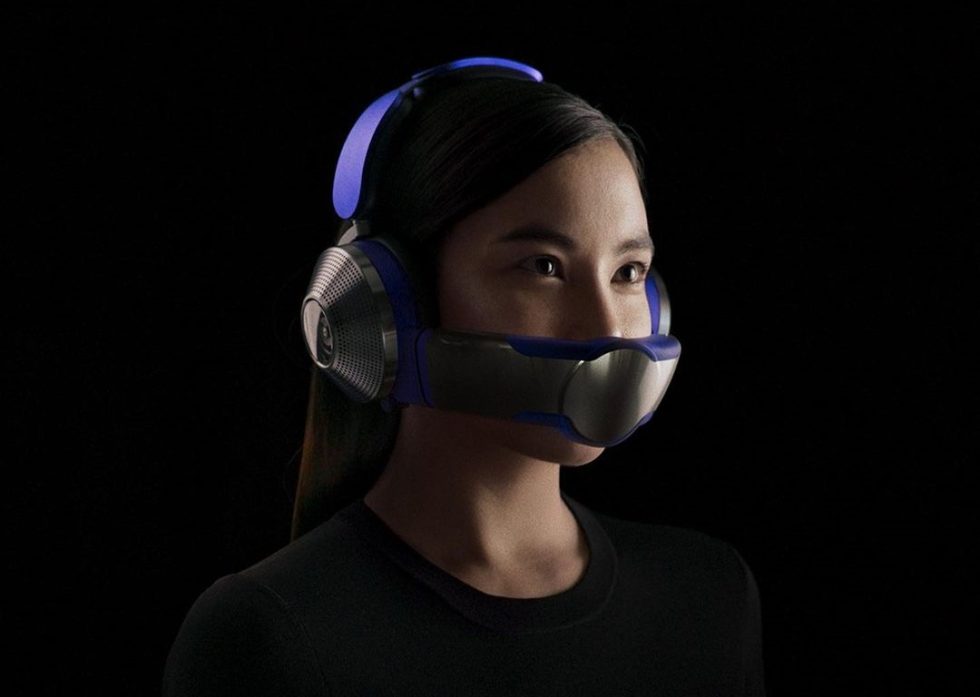
In an announcement timed dangerously close to April 1, Dyson confirmed this week that it is working on the Dyson Zone, one of the most intense consumer-facing masks we've ever seen. What's more, the company elected to combine this face-mounted air purifier with its first noise-canceling headphones—which contribute to the filtering process.
At least one outlet says it tested this perfect addition to your Mega Man cosplay project, which suggests this is an actual product and not an April Fool's joke. Curiously, the world's first face-on impressions of the device, as provided by The Verge, recount the company's press release spiel before getting to the heart of why a face-dominating system like the Dyson Zone has us apprehensive.
"The Zone headphones are very big and noticeably heavy," The Verge's Chaim Gartenberg says, and a single look at this head-mounted system clarifies why that might be the case.
Compressor concerns
Once a face mask has to reinforce a firmer piece of solid material anywhere near the mouth, chin, or jaw, it runs squarely into the issue of comfortable weight distribution. I've done a lot of head-mounted device testing at Ars Technica with this issue in mind, with my highest comfort score going to the clever "halo" construction of PlayStation VR and my lowest grade going, funnily enough, to another battery-powered face filtration system, the Razer Zephyr.
Dyson appears to one-up the Zephyr by at least using headphones to brace its Zone system with a top-of-head strap and earcups, and Dyson's literature suggests careful engineering to spread weight over that strap. But unlike other popular noise-canceling headphones, Dyson's first stab at the product category includes a filtration-focused airflow system. This draws air through dust-specific filters in the earpiece, then funnels that air toward the nose and mouth (through a bulky-looking pair of cheek-lining plastic pieces, which Dyson says do not touch the face) where further filtration awaits. As Gartenberg notes, this airflow system requires compressors, and these not only add weight but generate sound that the headphones' noise cancellation doesn't necessarily cancel out.
It's unclear whether the compressors' noise muffles a wearer's speech, which is a major reason why I don't recommend the first-generation Razer Zephyr. Additionally, The Verge's Dyson Zone test did not clarify how quickly heat generates, either by trapping air on the face or from its built-in battery. For comparison, the Razer Zephyr includes a pair of small fans that improve airflow within a plastic, semi-transparent trap; fog and heat can accumulate without these on, but the resulting noise makes conversations difficult when they're turned on.
A good way to be left alone on the bus
To Dyson's credit, this head-mounted system targets air pollution, not viral particulates, as a reason for daily use. And I could see its aesthetic being tolerable when air pollution is part of a public transit commute where users already block out people via music or podcasts.
However, Dyson Zone by default is not an N95- or KN95-rated masking system due to its "not touching the face" design (it has open pathways between the earpiece air intake and a wearer's nose and mouth). The best Dyson offers is a separate attachment to turn the system into a "proper, full-contact" face mask, Gartenberg reports. While that will better streamline the filter's focus on airborne particulates, that doesn't necessarily mean it'll be anywhere near hospital-grade upon shipping (and its advertising materials are careful not to suggest as much).
Dyson's announcement says the project began in 2016, well before the COVID-19 pandemic, as "a snorkel-like clean air mouthpiece paired with a backpack to hold the motor and inner workings." Dyson Zone has clearly shifted into a less terrifying state in the years since, even if its facial lining obscures the all-important social cues of a wearer's mouth.
The same announcement doesn't suggest we should expect further revisions to the model Gartenberg tested before its global launch in "fall 2022." Once it arrives, the world will be able to answer whether Dyson Zone's weird design, noisy filters, and (importantly) Dyson's first portable audio system combine into something worthwhile for pollution-wary commuters.
Ars Technica may earn compensation for sales from links on this post through affiliate programs.
reader comments
134